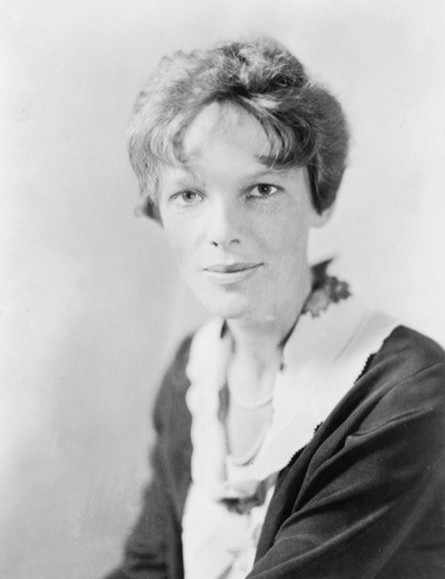Nikumaroro Island Hypothesis: Amelia Earhart’s Last Days on a Pacific Atoll?

The idea that Amelia Earhart spent her last days on the tiny Pacific Atoll of Nikumaroro (or Gardner Island) in present day Kiribati is nothing new. In fact, many have speculated for decades that the missing aviatrix's life ended in this remote and forgotten speck of land.
The aviation pioneer disappeared over the central Pacific Ocean between Papua New Guinea and Howland Island in 1937 in a Purdue-funded Lockheed Model 10 Electra as she attempted to make a circumnavigational flight across the globe. Accompanied by second navigator Fred Noonan, the pair's disappearance remains one of America's most baffling unsolved mysteries.
Earhart enjoyed wide celebrity status in the years before her disappearance and the mystery surrounding her final moments has captured the imagination of several generations.
On Tuesday, U.S. Secretary of State Hillary Clinton joined scientists and aviation archeologists to unveil a new expedition that will set out from Honolulu in July to probe underwater areas around the Phoenix Islands in Kiribati where Earhart is believed to have crashed 75 years ago.
When she took off on that historic journey she carried the aspirations of our entire country with her, Clinton said. Even if you do not find what you seek, there is great honor and possibility in the search itself.
Clinton called Earhart one of the fearless optimists who when it was really hard, decided she was going to break all kinds of limits - social limits, gravity limits, distance limits. The secretary said Earhart defined 20th century America.
The International Group for Historic Aircraft Recovery (TIGHAR) will lead the July 2 mission, which will be filmed and partially funded by the Discovery Channel. TIGHAR's executive director Ric Gillespie has long believed the clues to Earhart's disappearance lie in Nikumaroro, formerly part of the British Crown Colony of the Gilbert and Ellice Islands and now a part of the Phoenix Islands of Kiribati. The Phoenix Islands today are officially uninhabited save a few families that live on the largest and northernmost Kanton Island.
Noonan and Earhart's disappearance sparked a fruitless multimillion-dollar search operation at the time and numerous theories abound including speculation that Earhart fell into Japanese hands and was killed as a spy.
The renewed interested comes amid enhanced analysis of a rediscovered photo taken three months after Earhart's disappearance. The photo depicts portions of a plane in waters near Nikumaroro Island.
We found some really fascinating and compelling evidence, Gillespie said at the news conference in Washington on Tuesday. Finding the airplane would be the thing that would make it conclusive.
A British survey team took the photo in October of 1937 and it's been seen by Earhart researchers many times over the years. However, a recent blind review by U.S. State Department experts determined the component in the picture was very likely the landing gear of a Lockheed Electra.
Gillespie's had his eye on Nikumaroro Island since the late 1980s when TIGHAR purposed to apply scientific techniques to investigating aviation's historical mysteries. Two retired navigators, Tom Gannon and Tom Willi approached Gillespie with the idea that following standard navigational practice of the day, Noonan would have laid out a line of position that would have directed the pair to the larger Nikumaroro Island if they were unable to locate Howland.
Gillespie's been to the island nine times over the years collecting archaeological evidence that provides strong circumstantial evidence for a castaway presence. His team claims to have found crafts made with aircraft aluminum in an abandoned village on Nikumaroro that was lived in from 1938 to 1963. They also claim to have found records in the Kiribati National Archives in Tarawa titled Skeleton, Human, finding of on Gardner Island (sic) from 1940. The bones were allegedly associated with a woman's shoe and a sextant box, but attempts to locate the remains have been unsuccessful.
For the $500,000 mission in July, Gillespie and the TIGHAR team will return aboard a University of Hawaii research ship equipped to map and investigate the underwater search area with small robotic submarines. Phoenix International, the U.S. Navy's primary deep ocean search and recovery contractor, will carry out the underwater search.
It's a strong case, we think, but it's circumstantial, Gillespie said. There are some very smart people who think we're wrong about this. But there are some very smart people who think we're right.
© Copyright IBTimes 2024. All rights reserved.






















